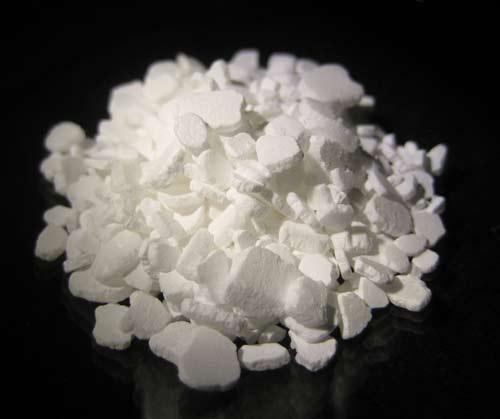deliquescence

Anhydrous calcium chloride is a deliquescent substance used for dehumidification.
Deliquescence is the absorption of atmospheric moisture by a solid until it dissolves to form a saturated solution. If a substance merely forms a crystalline hydrate it is termed hygroscopic. The phenomenon depends on the relative humidity: sugar, for example, deliquesces above 85% humidity.
Most deliquescent substances are salts. Examples include sodium hydroxide, potassium hydroxide, ammonium chloride, sodium nitrate, and calcium chloride. While table salt or sodium chloride (NaCl) may be deliquescent if the particles are small and the humidity is very high, table salt is usually considered to be hygroscopic.
Because of their affinity for water, deliquescent substances are used as desiccants. They may be used to remove excess water from sulfuric and phosphoric acids. In the chemical industry, deliquescent chemicals are used to remove water from chemical reactions.
Efflorescence
Efflorescence is the spontaneous loss of water from a crystalline hydrate, which crumbles on its surface to an anhydrous powder. Sodium carbonate and sulfate are common examples. Like its converse deliquescence, it depends on the relative humidity, occurring if the partial vapor pressure of water at the solid exceeds that of air.


